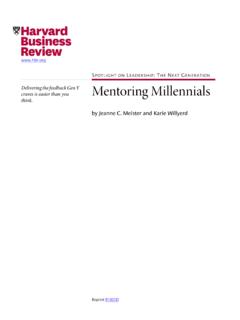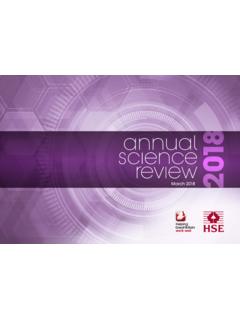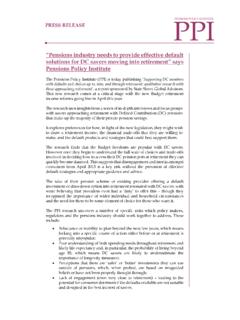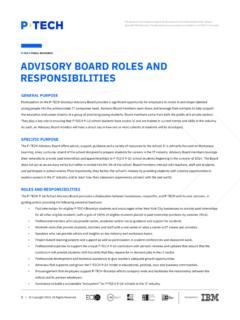Transcription of KONEKT MARKET REPORT
1 2 017 VOLUME 4 KONEKTKONEKTMARKET REPORTKONEKT MARKET REPORT VOLUME 4 201702 PAGEINTRODUCTION 04 OVERVIEW 05 RISK PROFILE 07 The KONEKT approach to risk profiling 08 The KONEKT experience 08 POPULATION AND REFERRAL PROFILE TRENDS 14 Referrals by service type 16 Referrals by injury type 16 Referrals by jurisdiction 17 Referrals by socioeconomic profile 17 Service costs, durations and outcomes for RTW referrals 18 Referrals by injury type over time 20 Referrals for RTW assistance over time 20 Compensable and non-compensable RTW outcomes over time 21 Profile of RTW outcome 22 Delay to referral for specific services versus RTW services 23 Rehabilitation service costs and duration over time 24 JURISDICTIONAL COMPARISONS 25 Profile of cases by jurisdiction 25 Socioeconomic profile by jurisdiction 26 Jurisdictional RTW service costs.
2 Referral delays service durations 26 for successful outcomes INDUSTRY PROFILES 27 Referrals by industry 27 Gender distribution by industry 28 Injury type by industry 29 Referral type by industry 30 Compensable referrals by industry 31 Service costs by industry 32 Delay to referral and service duration by industry 33 RTW outcomes by industry 34 RTW service costs, referral delays and service durations by industry 35 CONTENTSKONEKT MARKET REPORT VOLUME 4 201703 PAGEORGANISATION SIZE PROFILE 36 Profile of cases by organisation size 36 Gender distribution by organisation size 37 Socioeconomic profile by organisation size 38 Injury type by organisation size 38 Industry classification by organisation size 39 Referral type by organisation size 39 Compensable referrals by organisation size 40 RTW outcomes by organisation size 40 RTW service costs.
3 Referral delays and service durations by organisation size 41 WHAT YOU NEED TO KNOW ABOUT THE DATA 42 GLOSSARY OF FREQUENTLY USED TERMS AND DEFINITIONS 43 LIST OF TABLES 45 LIST OF FIGURES 46 REFERENCES 47 KONEKT MARKET REPORT VOLUME 4 201704 INTRODUCTION The concept of big data is not new, and the rehabilitation industry has much to gain from predictive analytics informing better practice. Through the MARKET REPORT program over the past four years KONEKT has significantly contributed MARKET data and insights to our stakeholders.
4 With a history spanning 25 years, and as the largest rehabilitation services provider with sophisticated data-capture systems, KONEKT is in a unique position, and we are pleased to share our case data tells us a great deal about the complexity of rehabilitation today, and about the opportunities to improve as an industry. There is one key message emanating from this fourth issue of the KONEKT MARKET REPORT ; it is a message that should be heeded as it represents opportunities to significantly lower costs and increase workforce must be made far closer to the actual injury data indicates the average delay to referral is more than six months.
5 The cost to society of delayed referral is enormous. Nobody benefits from the current situation of delay not employers, injured workers, regulators, or insurers. Immediate improvements are available right now. KONEKT s MARKET REPORT is not about finding fault; it is about finding opportunity. We have identified a great many opportunities to do better opportunities to leverage insights from data analysis to improve practices that yield better this edition of the KONEKT MARKET REPORT , we also share data that demonstrates the biopsychosocial impacts of a delay in return to work (RTW) impacts that we in the industry intuitively knew, but can now MARKET REPORT VOLUME 4 201705 OVERVIEW In the fourth issue of the KONEKT MARKET REPORT we analyse eight years of rehabilitation services data from over 156,000 cases.
6 This comprehensive review includes referral patterns and return-to-work outcomes across jurisdictions, organisation size and industry sectors. More are Returning to WorkThis year s trends remain relatively consistent with previous years. Our cohort was typically male, aged around 42 years and came from an average socioeconomic background. The most common injury type was musculoskeletal in origin and about 12% of the group had an identified mental health injury as their referral (96% in FY16) people successfully return to work after injury, and the proportion of people returning to their pre-injury work hours continues to improve (currently 89%).
7 We are achieving these outcomes at a lower cost and in a shorter timeframe than ever before. This is outstanding news, and indicates that we at KONEKT and our many customers should feel immensely proud that we are making a positive difference to Australian society every , the average delay from injury to referral for rehabilitation was over six months, with nearly one quarter of cases presenting more than one-year post injury. This is important, as the evidence is clear early intervention and a focus on workplace rehabilitation can reduce both human and economic costs of workplace ProfilingIn this edition we explore preliminary insights from data extracted from our risk-profiling approach KONEKT s method of identifying and capturing biopsychosocial factors impacting on RTW success.
8 KONEKT uses this data to inform our duration estimation and case management strategy. It is widely acknowledged that an integrated biopsychosocial approach to managing injuries can lead to better health and RTW outcomes, reduce claim duration, reduce the cost for injured people, employers and insurers, and improve the forecasting accuracy of case durations and , 2 Our risk-profile data offers valuable insights and informs both individual and overall case management practices. By applying a methodical approach to identifying individuals most at risk of poor outcomes, we can direct resources to ensure they are looked after effectively to reach a sustainable health and occupational outcome.
9 The majority of risks identified are modifiable by sharing this data, referrers know what factors contribute to the risk of poor outcomes, and can be proactive in driving successful RTW and Regulators Take HeedInjuries sustained in small businesses generally have lower RTW outcomes compared with those from large organisations (88% for small business compared with 90% for large). This is commonly considered to be due to a lack of resources to manage the injured worker, a limited understanding of the responsibilities and requirements, and a lack of exposure to the compensation system.
10 What can insurers and regulators do to address this discrepancy? The answer from the data is quite clear support small businesses earlier. Early access and assistance is essential to assist small businesses navigate the RTW pathway and maintain a productive MARKET REPORT VOLUME 4 201706 Some Shift in Mental Health IncidenceThe prevalence of identified mental health claims remains consistent at 12% of all injuries, however an increase in mental health conditions from within the public sector (Comcare) was evident (currently 16%, up from 11% in FY15).







